The bushpig scientifically known as Potamochoerus larvatus, is a member of the pig family that lives in East and Southern Africa’s woods, woodlands, riverine vegetation, and agricultural regions. Madagascar most likely has imported populations as well. Unconfirmed claims have also surfaced of their existence on the Comoro island of Mayotte. Bushpigs are mostly active at night. There are several subspecies.
The term ‘bushpig’ can refer to either Potamochoerus species.
In the untamed landscapes of Africa, a captivating creature roams the bushveld with stealth and resilience. The Bushpig (Potamochoerus larvatus) is a remarkable member of the wild pig family, renowned for its adaptability and intriguing behaviors.
Bushpig: Species Profile
COMMON NAME: Bushpig
SWAHILI NAME: Nguruwe Mwitu
SCIENTIFIC NAME: Potamochoerus larvatus
TYPE: Mammal
FOOD: Bushpigs are omnivorous animals and have a varied diet. They feed on a wide range of food including roots, tubers, fruits, seeds, grass, and small invertebrates like insects and worms. They are opportunistic feeders and can adapt to different food sources depending on availability.
HABITAT: Bushpigs are found in various habitats across sub-Saharan Africa, including forests, woodlands, savannahs, and riverine areas. They are adaptable and can thrive in both dense vegetation and open habitats, as long as there is sufficient water and suitable food sources.
SIZE: Bushpigs are medium-sized pigs. They typically measure between 100 to 150 centimeters (39 to 59 inches) in length and stand around 60 to 80 centimeters (24 to 31 inches) tall at the shoulder. Adult males are generally larger and heavier than females.
AVERAGE LIFE SPAN IN THE NATURAL HABITAT: In the wild, bushpigs have an average lifespan of around 10 to 15 years. However, their lifespan can vary depending on factors such as predation, habitat conditions, and human interference.
ACTIVE: Bushpigs are primarily nocturnal animals, meaning they are most active during the night. They have well-developed senses of smell and hearing, which helps them navigate and detect potential threats. During the day, they typically rest in dense vegetation or wallow in mud to keep cool and protect their skin from parasites.
GESTATION PERIOD: The gestation period of a bushpig lasts approximately 4 months. After this period, a female gives birth to a litter of 3 to 6 piglets, which are born with stripes that fade as they grow older. The piglets stay close to their mother and are weaned after a few months.
WEIGHT: Adult bushpigs can weigh between 60 to 150 kilograms (130 to 330 pounds). Males are generally larger and heavier than females. Their robust build and sturdy physique make them well-adapted to their terrestrial lifestyle.
SIZE COMPARISON TO A 6-FT MAN: Bushpigs are smaller in size compared to a 6-ft man. Standing at around 60 to 80 centimeters (24 to 31 inches) tall at the shoulder, they are roughly half the height of an average man. However, their weight can still be substantial, ranging from 60 to 150 kilograms (130 to 330 pounds).
Distinctive Physical Traits:
The bushpig (Potamochoerus larvatus) is a species of wild pig found in various parts of sub-Saharan Africa. Here is a description of its appearance:
- Size and Build: Bushpigs are medium-sized pigs, with males being slightly larger than females. They have a robust and compact build, with a height at the shoulder ranging from 60 to 100 centimeters (24 to 39 inches). Adult bushpigs can weigh between 55 to 150 kilograms (121 to 330 pounds).
- Coat: Their coat is coarse and bristly, with a coloration that can vary across individuals. Generally, they have a reddish-brown or dark brown coat, often with sparse hair. Some individuals may have lighter patches or stripes on their body, especially on the face.
- Head and Face: Bushpigs have a distinctive head shape. They possess a broad and flattened snout, similar to that of domestic pigs. Their ears are large and rounded, standing erect on the sides of the head. The face is adorned with a pair of sharp tusks, which are elongated canine teeth.
- Body Features: The body of a bushpig is stout and muscular. They have short, strong legs that allow them to move swiftly through their habitat. Their feet have two functional toes with tough hooves, enabling them to navigate various terrains, including dense vegetation and muddy areas.
- Tail: The bushpig has a relatively long and thin tail that extends outward from the body. The tail usually measures around 30 to 50 centimeters (12 to 20 inches) in length and is topped with a brush-like tuft of hair.
- Scent Glands: Both male and female bushpigs possess prominent scent glands located on the lower jaw, which are used for communication and marking their territories. These glands release a strong odor that helps to establish their presence to other bushpigs in the vicinity.
Overall, the bushpig’s appearance reflects its adaptation to a life in the wild. Its robust build, bristly coat, and sharp tusks are characteristic features that allow it to survive and thrive in its natural habitat.
A. Compact and Sturdy Build:
The Bushpig possesses a compact and sturdy build, typically measuring around 3.5 feet (1.1 meters) in length and standing about 2 feet (60 centimeters) tall at the shoulder. Adults can weigh between 90 and 180 pounds (40 to 80 kilograms). Its body is covered in coarse bristly hair that varies in color from reddish-brown to dark brown, providing effective camouflage in its natural habitat.
B. Prominent Facial Features:
One of the most noticeable features of the Bushpig is its elongated snout, which is equipped with a sturdy cartilage disk at the tip. This unique adaptation allows it to root and dig for food, particularly underground tubers and roots. Additionally, both males and females possess sharp tusks that curve outward and upward from their lower jaws.
Habitat and Distribution:
A. Varied Habitat Preferences:
Bushpigs display remarkable adaptability, inhabiting a diverse range of environments across sub-Saharan Africa. They are found in woodlands, savannas, grasslands, and even montane forests. These versatile creatures can thrive in habitats with sufficient water sources and ample cover for protection.
B. Widespread Distribution:
Bushpigs are distributed throughout eastern and southern Africa, including countries such as Kenya, Tanzania, Zambia, Zimbabwe, and South Africa. Their ability to adapt to different habitats has contributed to their relatively widespread presence across the region.
Remarkable Adaptations:
A. Nocturnal Lifestyle:
Bushpigs are predominantly nocturnal, preferring to forage and explore their surroundings under the cover of darkness. This behavior allows them to avoid potential predators and human interference while taking advantage of the cooler temperatures and reduced competition for resources.
B. Omnivorous Diet:
These omnivorous creatures have a diverse diet that includes plant matter, fruits, roots, tubers, small vertebrates, and invertebrates. Their strong snouts and sharp tusks aid in digging and rooting for underground food sources, while their keen sense of smell helps them locate edible items in their environment.
Social Behavior:
Bushpigs (Potamochoerus larvatus) display a range of behaviors that are well-adapted to their natural habitat in sub-Saharan Africa. Here are some key aspects of bushpig behavior:
- Nocturnal Behavior: Bushpigs are primarily nocturnal, which means they are most active during the night. They have well-developed senses that allow them to navigate and forage in low light conditions.
- Social Structure: Bushpigs are usually solitary animals, although they may form small groups consisting of a female and her offspring. Males are generally solitary and may be aggressive towards each other, especially during mating season.
- Foraging and Feeding: Bushpigs are omnivorous, meaning they consume a varied diet consisting of both plant matter and animal material. They are opportunistic feeders, relying on their keen sense of smell to locate food. Their diet includes grasses, roots, tubers, fruits, seeds, insects, small vertebrates, and carrion.
- Habitat and Territory: Bushpigs inhabit a range of habitats, including woodlands, forests, savannahs, and swamps. They are adaptable to different environments as long as there is suitable vegetation for feeding and cover for protection. Bushpigs mark their territory using scent markings from their specialized scent glands located on their lower jaws.
- Defense Mechanisms: When threatened or cornered, bushpigs can display aggressive behavior. They will lower their heads and charge at the perceived threat, using their sharp tusks as a defense. They can be formidable adversaries when confronted, capable of inflicting serious injuries with their tusks.
- Water Dependence: Bushpigs have a strong affinity for water and are excellent swimmers. They often seek out water sources such as rivers, streams, and swamps for drinking and cooling down during the hot daytime hours.
- Vocalizations: Bushpigs communicate using a variety of vocalizations, including grunts, growls, and squeals. These vocalizations serve as a means of social interaction, warning signals, or as a form of alarm to alert others to potential danger.
Overall, bushpigs display behaviors that are essential for their survival in their natural environment. Their nocturnal habits, foraging strategies, territorial marking, and defensive mechanisms contribute to their ability to thrive in diverse habitats throughout sub-Saharan Africa.
A. Family Units:
Bushpigs are generally solitary or form small family groups consisting of a female and her offspring. However, during periods of abundant food resources, they may come together in larger gatherings. Males, known as boars, are usually solitary and maintain territorial boundaries through scent marking and vocalizations.
B. Communication and Vocalizations:
Bushpigs communicate through a variety of vocalizations, including grunts, snorts, and growls. These sounds play a crucial role in establishing dominance, warning of danger, and maintaining contact within family groups.
Conservation Status:
A. Conservation Concerns:
While Bushpigs are not currently considered endangered, they face several conservation challenges. Habitat loss due to human encroachment, hunting for bushmeat, and competition with livestock for resources are significant threats to their populations. Additionally, their adaptability can make them vulnerable to human-wildlife conflicts.
Conservation Efforts:
Conservation organizations and local communities are working towards safeguarding the future of Bushpigs and their habitats. Initiatives such as protected areas, habitat restoration, and community-based conservation programs aim to mitigate the threats and promote coexistence between humans and wildlife.
Potamochoerus larvatus
The Potamochoerus larvatus (Bushpig), with its distinct physical traits, remarkable adaptations, and intriguing social behavior, remains a captivating resident of the African wilderness. While facing conservation challenges, its resilience and adaptability serve as a testament to the incredible biodiversity found on the continent. By understanding and appreciating the unique qualities of the Bushpig, we can contribute to its conservation and ensure its place in the rich tapestry of African wildlife.
Bushpig Adaptations
Bushpigs (Potamochoerus larvatus) have several adaptations that help them survive and thrive in their natural habitat in sub-Saharan Africa. These adaptations include:
- Physical Appearance: Bushpigs have a compact and robust body with relatively short legs. They have a coarse, bristly coat that ranges in color from reddish-brown to dark brown or black, providing them with camouflage in their wooded habitats. They also have a prominent dorsal crest of long hairs that can be raised as a warning signal.
- Tusks: Bushpigs have long, curved, and razor-sharp tusks that protrude from their lower jaws. These tusks are used for defense against predators and for digging up roots and tubers, their preferred food sources.
- Scent Glands: Bushpigs have specialized scent glands located on their lower jaws. These glands produce a strong odor, which the bushpigs use to mark their territory and communicate with other individuals.
- Sense of Smell: Bushpigs have a highly developed sense of smell, which they rely on to locate food, detect predators, and communicate with other bushpigs. Their keen sense of smell helps them find roots, tubers, and other underground food sources.
- Nocturnal Behavior: Bushpigs are primarily nocturnal, meaning they are most active during the night. This adaptation helps them avoid the heat of the day and reduces their exposure to potential predators.
- Omnivorous Diet: Bushpigs have an adaptable diet and are considered omnivorous. They feed on a variety of plant matter, including roots, tubers, fruits, and seeds. They also consume insects, small vertebrates, and carrion when available, making them opportunistic feeders.
- Excellent Swimmers: Bushpigs are skilled swimmers and are often found near water sources such as rivers, streams, and swamps. Their ability to swim well enables them to access food, escape from predators, and cool down during hot periods.
These adaptations allow bushpigs to thrive in diverse environments, from woodlands and forests to savannahs and swamps. Their physical characteristics, keen senses, feeding habits, and swimming abilities contribute to their survival and success in their natural habitat.
Best Places to See Bushpigs in Tanzania
Bushpigs (Potamochoerus larvatus) can be found in various regions of Tanzania, particularly in areas with suitable habitat and vegetation cover. While they are not as commonly encountered as other wildlife species, there are a few national parks and game reserves where visitors have a chance to spot bushpigs. Some of the places where bushpigs can be seen in Tanzania include:
- Serengeti National Park:
This renowned national park is primarily known for its vast savannahs and the Great Wildebeest Migration. While bushpigs are not as abundant as other species in the Serengeti, they can still be found in certain areas of the park, especially around woodland edges and near water sources. - Ngorongoro Crater:
The Ngorongoro Conservation Area, which includes the Ngorongoro Crater, is home to a diverse range of wildlife. Bushpigs can occasionally be spotted in the crater’s grassy plains and woodland areas, particularly in the early morning or late afternoon. - Selous Game Reserve:
Located in southern Tanzania, the Selous Game Reserve is the largest protected wildlife area in Africa. It offers a remote and pristine wilderness where bushpigs thrive in the dense woodlands and along the riverbanks. Exploring this vast reserve on a safari can increase your chances of encountering bushpigs. - Mikumi National Park:
Situated in the southern part of Tanzania, Mikumi National Park is known for its open grasslands, acacia woodlands, and the Mkata River. While bushpigs are not as commonly sighted as other wildlife species, they can be spotted in the park, especially near water sources and in areas with dense vegetation.
It’s important to note that bushpigs are generally shy and nocturnal animals, which can make them more challenging to observe during daylight hours. Engaging the services of an experienced guide or joining guided game drives in the mentioned national parks and reserves will greatly enhance your chances of seeing bushpigs in their natural habitat.
Bushpig Safari Tips
If you’re planning a bushpig safari in Tanzania, here are some tips to enhance your experience and increase your chances of spotting these elusive creatures:
- Choose the Right Safari Destination: Select national parks and game reserves known for supporting bushpig populations, such as the Serengeti National Park, Ngorongoro Crater, Selous Game Reserve, and Mikumi National Park. These areas offer suitable habitats and vegetation where bushpigs are more likely to be found.
- Go on Night Drives: Bushpigs are primarily nocturnal, so consider joining a night safari or game drive to maximize your chances of encountering them. With the help of spotlights and the expertise of your guide, you may catch a glimpse of these elusive creatures as they become more active after dusk.
- Look for Signs of Bushpigs: Keep an eye out for tracks, droppings, and other signs of bushpig activity while on your safari. Experienced guides can identify these indicators and lead you to areas where bushpigs have recently been present.
- Visit Water Sources: Bushpigs are fond of water and often frequent rivers, streams, and waterholes. Including locations with reliable water sources in your safari itinerary can increase your chances of encountering bushpigs as they come to drink or wallow.
- Be Patient and Observant: Spotting bushpigs requires patience and keen observation skills. Keep your eyes peeled, scan the surroundings, and listen for any sounds that might indicate their presence. Bushpigs are known for their stealthy behavior, so a keen eye and attentive ear can make all the difference.
- Follow Your Guide’s Instructions: Guides are knowledgeable about the behavior and habitat of bushpigs. Listen to their instructions, ask questions, and follow their lead during game drives. They can provide valuable insights and help you make the most of your bushpig safari experience.
- Respect Wildlife and their Habitat: Remember to maintain a respectful distance from the bushpigs and other wildlife you encounter. Keep noise levels low, avoid sudden movements, and never feed or disturb the animals. By observing from a distance, you ensure both your safety and the well-being of the bushpigs and their natural environment.
- Carry Proper Equipment: Bring a pair of binoculars or a camera with a zoom lens to get a closer look at bushpigs and capture memorable photographs. Also, pack appropriate clothing, including neutral colors that blend with the surroundings, to help you blend in during your safari.
By following these tips and immersing yourself in the natural beauty of Tanzania’s wilderness, you increase your chances of enjoying a successful and rewarding bushpig safari.
Q: What is a bushpig? A: The bushpig (Potamochoerus larvatus) is a species of wild pig found in various parts of sub-Saharan Africa, including Tanzania. It is known for its compact and robust build, with a distinctive appearance and behavior.
Q: Where do
Bushpig Frequently Asked Questions
Here are some frequently asked questions (FAQs) about bushpigs:
Q: What is a bushpig?
A: The bushpig (Potamochoerus larvatus) is a species of wild pig found in various parts of sub-Saharan Africa, including Tanzania. It is known for its compact and robust build, with a distinctive appearance and behavior.
Q: Where do bushpigs live?
A: Bushpigs inhabit a range of habitats, including forests, woodlands, and grasslands. In Tanzania, they can be found in areas such as the Serengeti National Park, Ngorongoro Crater, Selous Game Reserve, and Mikumi National Park.
Q: What do bushpigs eat?
A: Bushpigs are omnivorous animals with a varied diet. They primarily feed on roots, tubers, bulbs, fruits, and grasses. Additionally, they consume insects, small mammals, reptiles, and even carrion if available.
Q: How big are bushpigs?
A: Adult bushpigs typically measure around 1.1 to 1.3 meters (3.6 to 4.3 feet) in length and stand about 60 to 85 centimeters (24 to 33 inches) tall at the shoulder. They can weigh between 55 to 150 kilograms (120 to 330 pounds), with males generally larger than females.
Q: Are bushpigs dangerous?
A: While bushpigs are generally not aggressive towards humans, they can become defensive if they feel threatened or cornered. It is advisable to keep a safe distance and observe them from a respectful distance while on a bushpig safari.
Q: Are bushpigs social animals?
A: Bushpigs are typically solitary or live in small family groups consisting of a female and her offspring. They are generally not as social as some other pig species.
Q: What are the main predators of bushpigs?
A: Predators that pose a threat to bushpigs include lions, leopards, hyenas, and crocodiles. However, adult bushpigs are relatively strong and agile, and they can put up a fight when confronted by predators.
Q: Do bushpigs have any unique adaptations?
A: Bushpigs have several adaptations that help them thrive in their environment. They possess a keen sense of smell, which aids in foraging for food and detecting predators. Their strong build and sharp tusks are used for defense and digging up food sources like roots and tubers.
Q: Can bushpigs swim?
A: Yes, bushpigs are capable swimmers and are known to take to the water to escape predators or reach food sources. They are also known to wallow in mud, which helps them regulate their body temperature and protect against parasites.
Q: Are bushpigs endangered?
A: Bushpigs are currently listed as a species of least concern on the IUCN Red List, indicating that they are not currently at significant risk of extinction. However, localized population declines can occur due to habitat loss, hunting, and competition with domestic livestock.
Please note that these FAQs provide general information about bushpigs. It’s always recommended to consult local guides and wildlife experts for more specific and up-to-date details during your bushpig encounters in Tanzania.

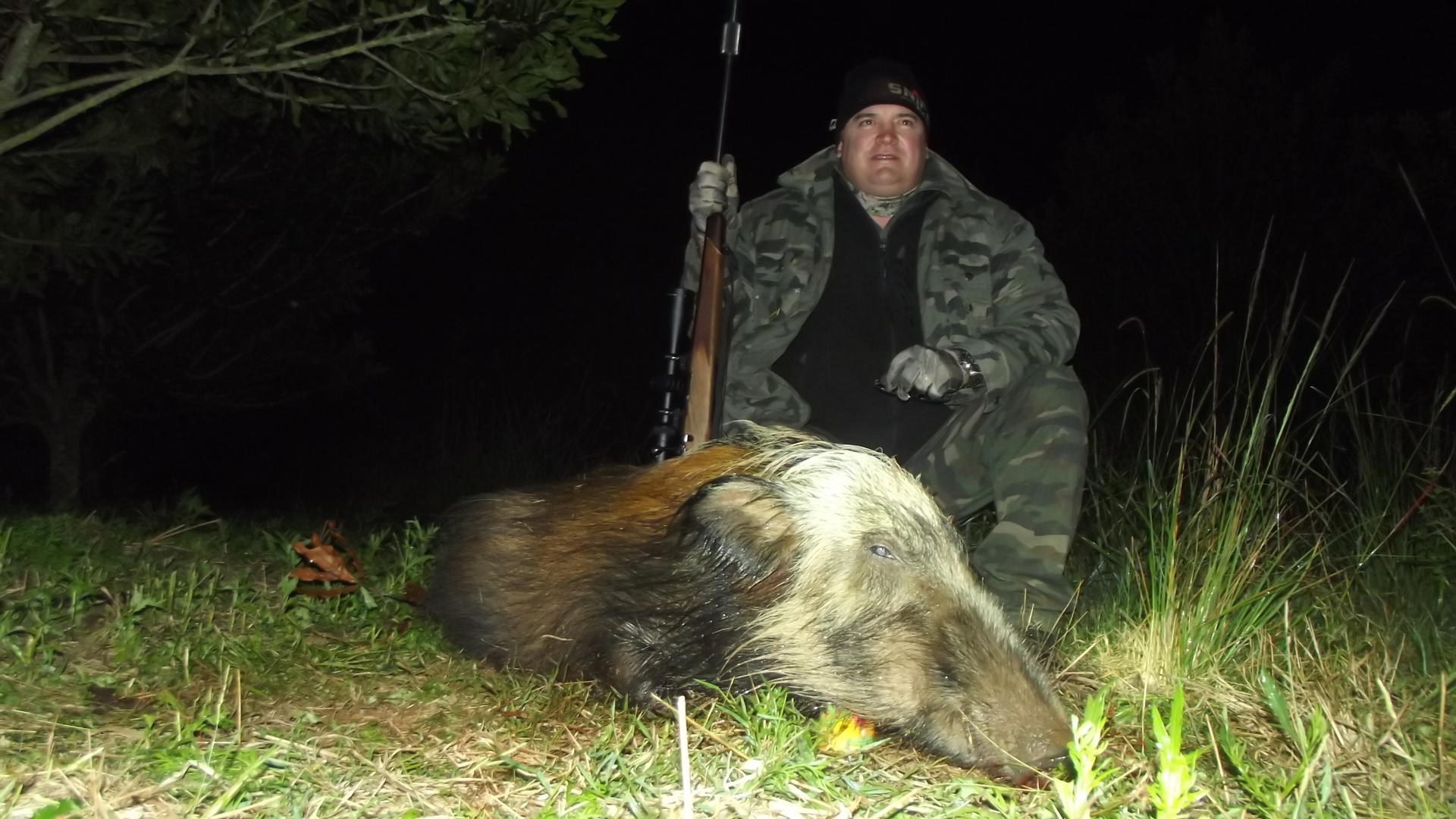

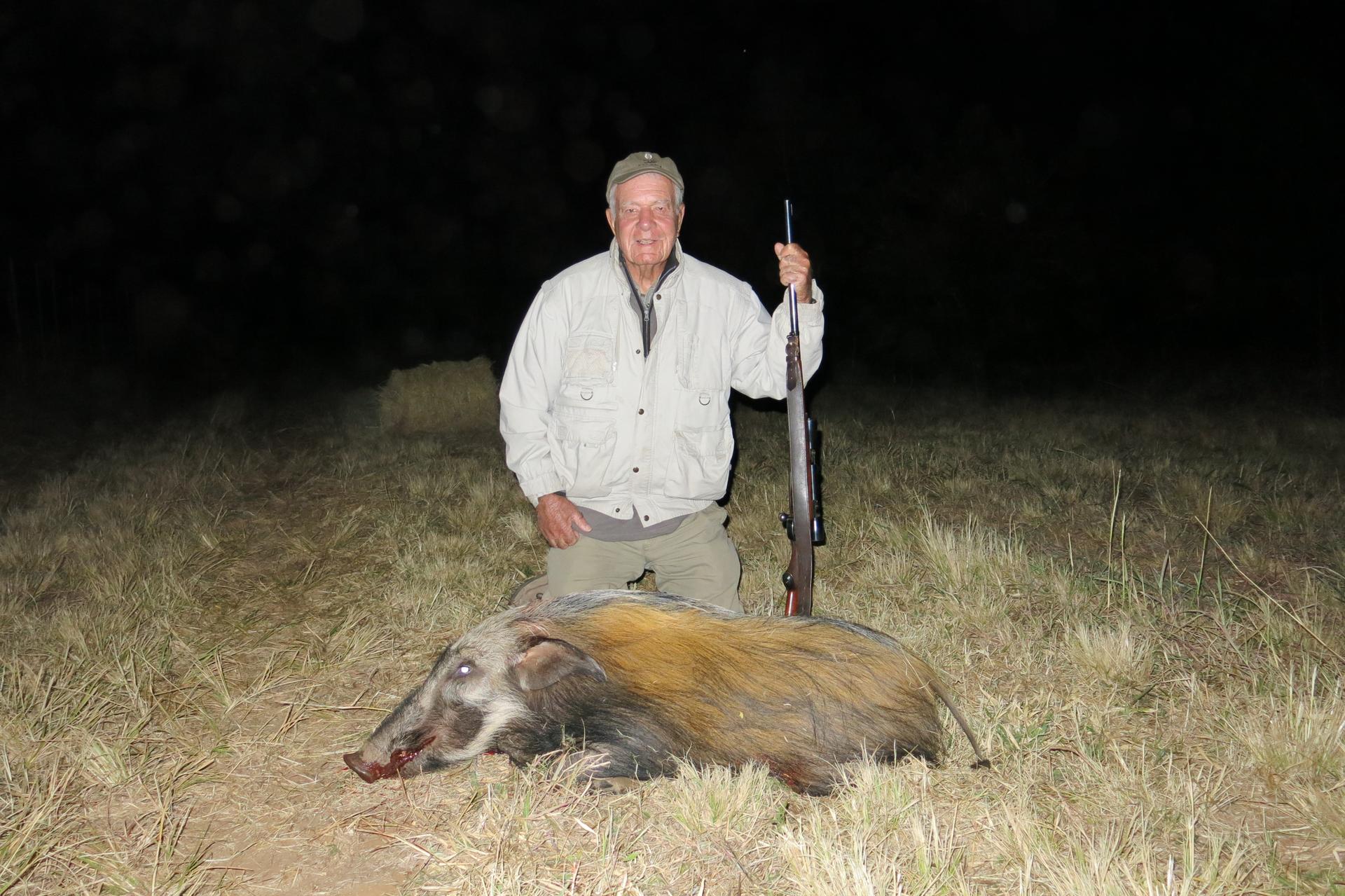
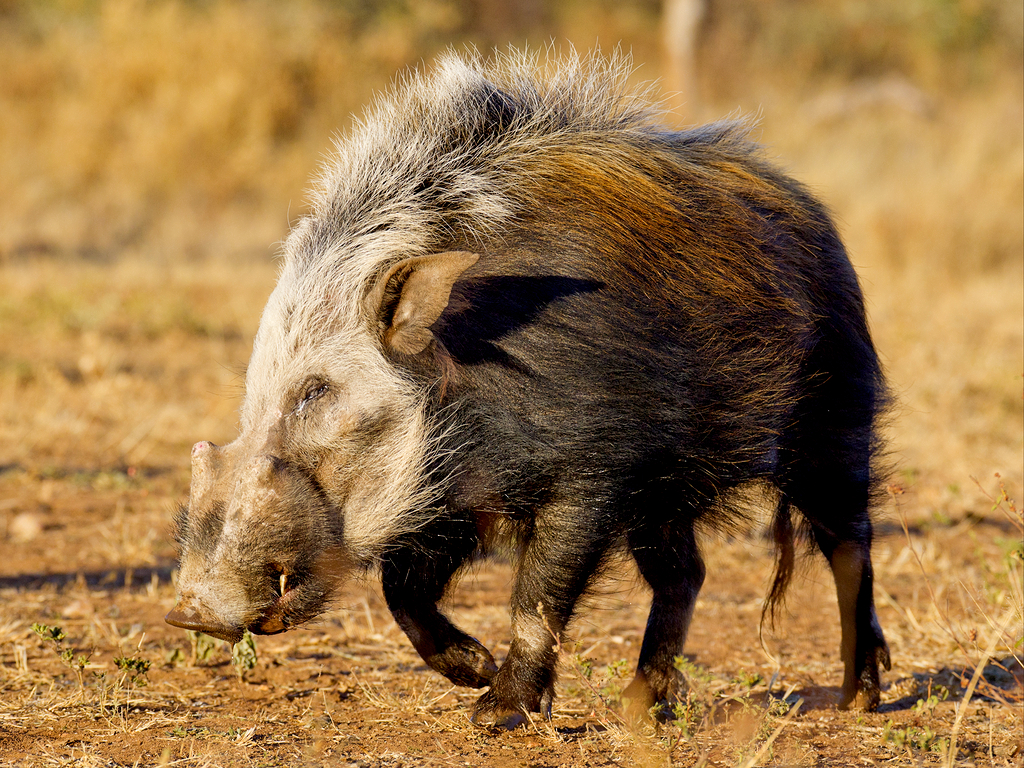
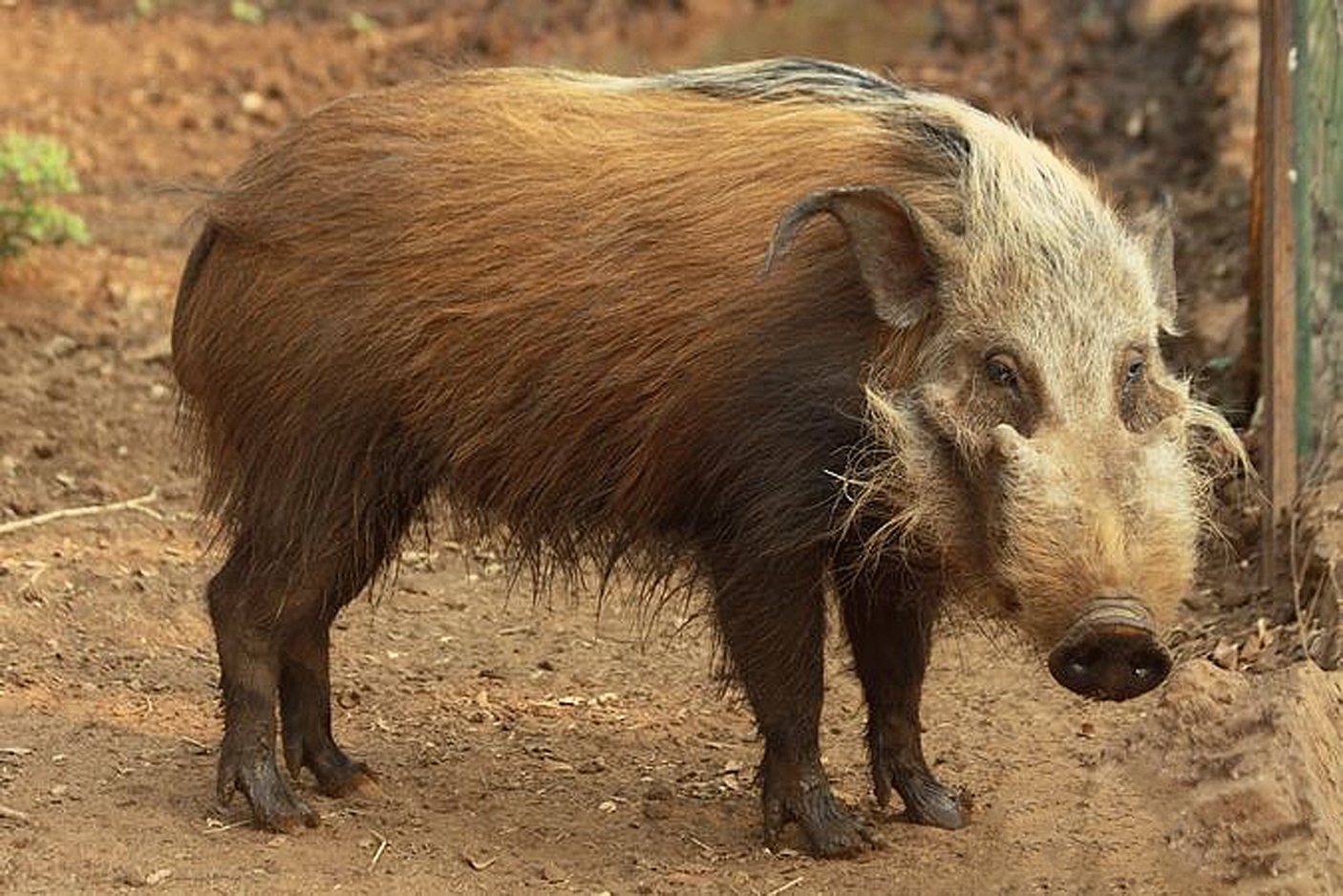
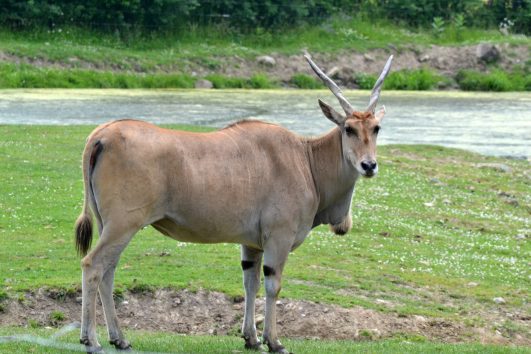

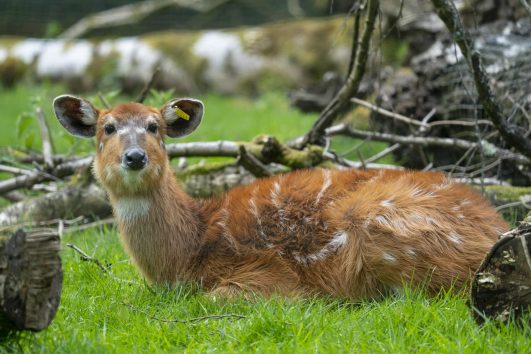
Tour Reviews
There are no reviews yet.
Leave a Review